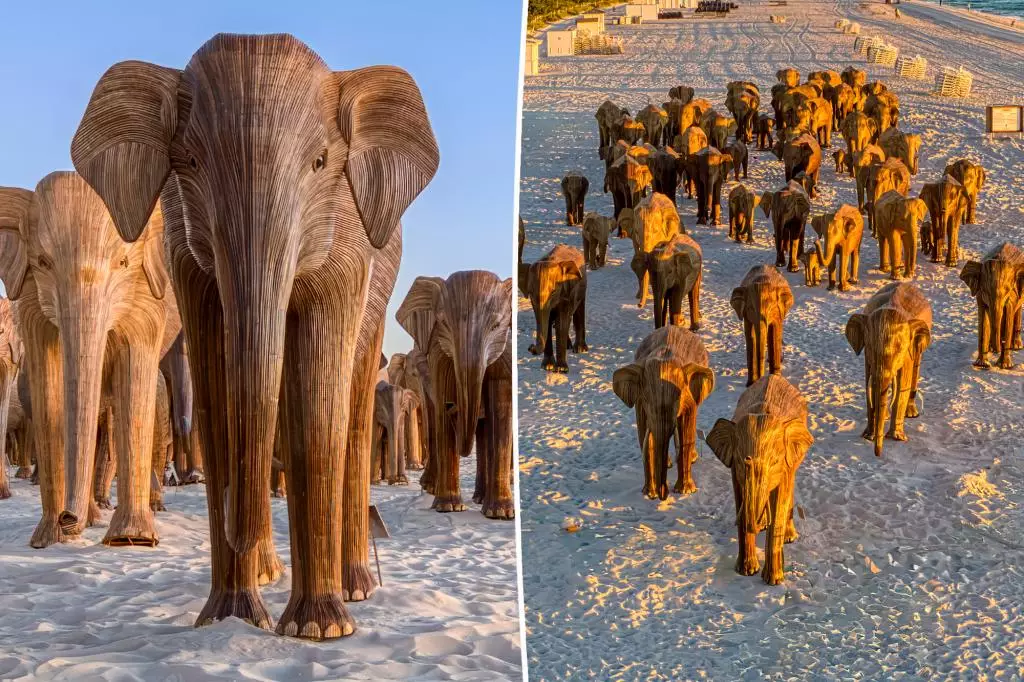As the world of contemporary art prepares for its grand showcase at Art Basel, the lead-up to the event has already unveiled some rather scandalous moments that reflect the bizarre intersections of art, culture, and human behavior. An incident involving a couple engaged in unrestrained public intimacy on a massive elephant sculpture has stirred both amusement and bewilderment. Such occurrences serve as a reminder that even in the elite echelons of the arts, there are moments that challenge societal norms and expectations.
The couple’s daring escapade atop a life-sized representation of a majestic Indian elephant was part of an installation named “The Great Elephant Migration.” This provocative act, witnessed by a security guard who was initially baffled by the sounds emanating from the exhibit, highlights the unpredictability of public art spaces. One wonders how the couple managed to ascend the sculpture—perhaps employing the trunk as a makeshift ladder. Notably, security initially addressed the matter with a sense of levity, opting for a conversation over confrontation, which ultimately allowed the couple to escape unscathed.
Adding another layer to the narrative, an unnamed rapper affiliated with DJ Khaled attempted to seize the moment by shooting a music video amid the serene chaos of the installation. This underscores a contemporary trend where artists from various disciplines intersect, blurring the lines between visual art and music. The late-night attempt, however, was met with opposition, reminding all that while public art can inspire, it also has boundaries that must be respected.
To prevent future incidents that flank the thin line between art appreciation and debauchery, the organizers have opted to enhance security around the installation. This adjustment reveals a persistent tension in contemporary art; while the intent is to provoke thought and emotions, managing public behavior remains an ongoing challenge.
The elephant sculptures themselves are not mere installations; they represent a collaborative effort by a community of 200 artisans known as “The Real Elephant Collective,” working within India’s Nilgiri Biosphere Reserve. The sculptures, made from the invasive weed Lantana camara, do more than catch the eye. They promote awareness and advocacy for wildlife conservation efforts. The sale of these artworks not only supports the artists, who aim to uplift their community but also contributes to various wildlife NGOs, intertwining the realms of art and environmentalism.
Prominent figures like Cher and Diane von Furstenberg, who serve as ambassadors for this project, further amplify its message. Their involvement underscores a growing trend of using celebrity influence to champion worthy causes within the arts. Moreover, this partnership with Elephant Family USA and Xerjoff enriches the narrative, aligning art with a commitment to sustainability and ecological responsibility.
A Final Reflection
As we await Art Basel’s official opening, the pre-event antics and the thoughtful endeavors behind the art installations highlight the multifaceted nature of contemporary culture. From raucous encounters to meaningful artistic collaborations, the narrative surrounding this year’s fair serves as a reflection of society’s complexities. Art, as always, remains a mirror of human life—both the jubilant and the absurd, reinforcing its role as a crucial platform for dialogue and expression.


Leave a Reply